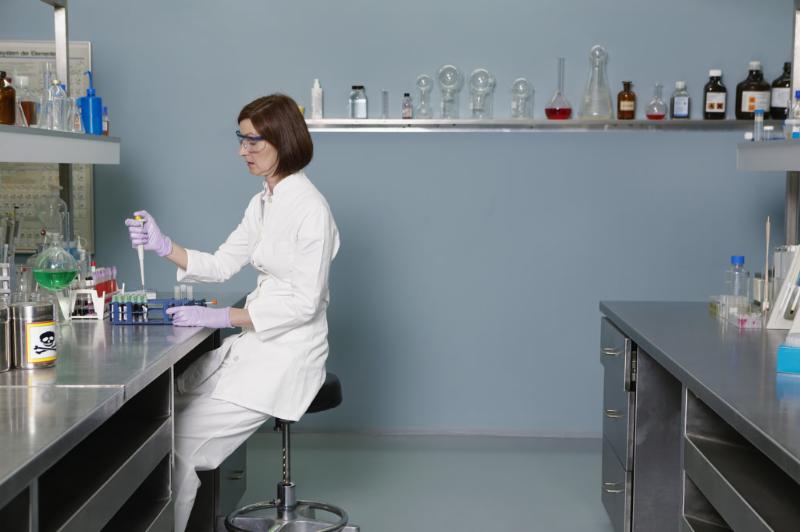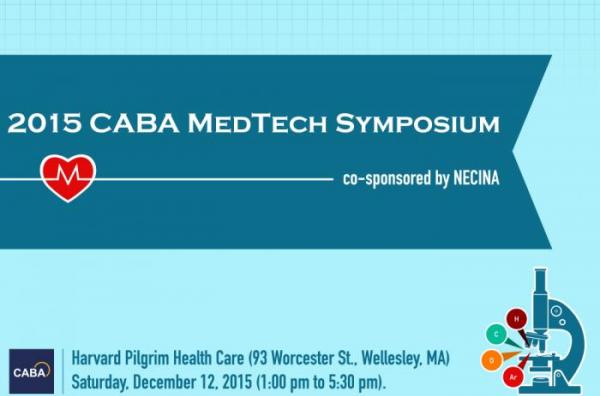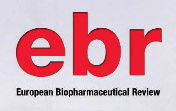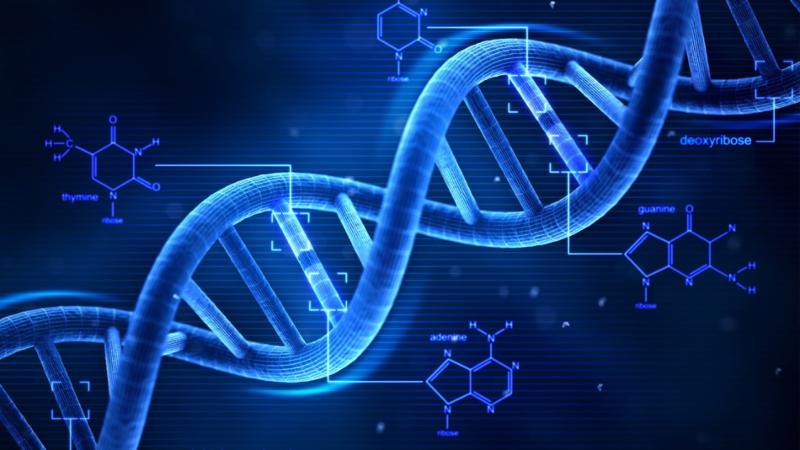Developing a Product?  Commercializing a Product?
| |

If you are developing a product and have not conducted the business due diligence to determine commercial viability or success, contact me for an appointment. For successful commercial adoption of your product or looking to grow your business, contact me for an appointment.
For more information on our services, click on the links below:
Product Development
Market Development
Marketing Strategies
Top
|
Chinese-American BioMedical Association  (CABA) MedTech Symposium | |
 I am pleased to announce that I spoke at the 2015 CABA MedTech Symposium on "Merging Technology and Commercialization in Product Development," December 12th at Harvard Pilgram Health Care. To see a list of speakers and topics, click here.
|
Stem Cell Research: Under Investigation  | |
 I am pleased to announce that my article "Stem Cell Research: Under Investigation has been published in the European Biopharmaceutical Review (EBR). To read an electronic version, click here. Top |
New Updates in Genome Engineering
| |

Gene editing (genome engineering) was thought to be science fiction because it started with the deletion or insertion of a DNA sequence at a specific location, increasing its accuracy through a technique called homologous recombination. This technique was a long and random process, because the desired recombination events occur extremely infrequently (1 in 106-109 cells), presenting enormous challenges to large-scale applications of gene-targeting experiments and as a result, has been limited in most organisms. Today, genome engineering is based on the use of engineered or programmable nucleases composed of sequence-specific DNA-binding domains bound to a nonspecific DNA cleavage module. These nucleases are guided to a specific sequence within the genome to induce a double-strand DNA break (DSB). When a DSB is generated, the cell's intrinsic DNA repair system is activated and the genome is modified during the repair of the DSB. DSBs are typically repaired by either nonhomologous end joining (NHEJ) or homology-directed repair (HDR). There are three main DNA-binding proteins that have been engineered. But all three have issues with either specificity, or flexibility and adaptability of gene editing.
1) Meganucleases derived from microbial mobile genetic elements2) Zinc-finger nucleases (ZNFs) based on eukaryotic transcription factors 3) Transcription activator-like effector nucleases (TALENs)from Xanthomonas bacteria
Then everything changed when the clustered regularly interspaced short palindromic repeats CRISPR/Cas9 endonucleases-RNA-guided DNA endonuclease Cas9 from the type II bacterial adaptive immune system was discovered and gene editing got a lot easier.
In the CRISPR/Cas9 system, the protospacer-adjacent motif (PAM) is the critical element, located at the 3' end of the DNA target site and dictating the search mechanism for the DNA target with Cas9. Several studies have demonstrated that PAM is involved in the binding of the Cas9 to the target and the DSB. Target sequences without PAM do not induce DSB. Cas9 (formerly known as Cas5, Csn1, or Csx12) is the only enzyme within the Cas gene cluster that facilitates target DNA cleavage. The CRISPR/Cas9, type II system is emerging as the sequence-specific nucleases of choice for genome engineering for three reasons:
1) Cas9 is guided by a single - guide RNA (gRNA) that is easily engineered. The gRNA targeting sequence consist of 20 nucleotides (nt), which is homologous to the DNA target site and can be ordered as a pair of oligonucleotides and rapidly cloned;
2) The modular features of the CRISPR-Cas9 system and short 20 nt length of the targeting gRNA makes these components advantageous in being able to target and cleave multiple target sequences simultaneously (multiplexing); and
3) the CRISPR-Cas9 system enables efficiency and high specificity with minimal off-target effects of unwanted chromosomal translocations when well-designed gRNAs are used. The Cas9 requires precise homology between the gRNA and the targeted DNA sequence, but it does allow a few mismatches of base pairs in the target sequence when a DBS is generated. Depending on the number, position and distribution of mismatches, this could affect specificity and the desired application. These off-target effects and the long-term consequences of these effects are the current concerns with the CRISPR systems. Scientists are working on various methodologies such as Cas9 nickase to target single-strand breaks on opposite sides of the targeted DNA, or choosing unique target sequences and optimizing gRNA and Cas9 to minimize this phenomenon. We can credit the discovery of the CRISPR/Cas9 system to two principal people: 1) Jennifer Doudna, an award-winning scientist from University of California, Berkeley and Broad Institute, Massachusetts; and 2) Emmanuelle Charpentier, world-leading expert in the regulatory mechanisms underlying the processes of infection and immunity in bacterial pathogens from France, along with their teams. The two were nominated to be on the short-list for the next Nobel Prize. In the lab, geneticists have been able to cut out HIV, correct sickle-cell anemia and alter cancer cells to make them more susceptible to chemotherapy. In the future, with this technology, scientists may be able to edit any human gene. Recently, Feng Zhang of the Broad Institute in Massachusetts, who also worked on the CRISPR/Cas9 system, published his work in collaboration with various other institutions on the CRISPR system using the enzyme Cpf1 instead of Cas9. It's predicted that this enzyme will help overcome some of the difficulties researchers have encountered as they develop CRISPR-related treatments for human diseases. Numerous companies have been working with the CRISPR/Cas9 technology to create therapeutic treatments, but none have yet reached clinical trials. While Cpf1 is still in early research, Zhang believes that "There is little doubt that... there are additional systems with distinctive characteristics that await exploration and could further enhance genome editing and other areas of biotechnology as well as shed light on the evolution of these defense systems."
|
| |
Cpf1 is a CRISPR-associated two-component RNA-
programmable DNA nuclease
Source: Cell.com.
|
Here's Zhang perspective on why Cpf1 might be better than Cas9: -Cpf1 uses only one strand of RNA verses Cas9, which uses two strands to guide and reach its target gene. A single-strand system might be simpler, a cheaper design and an easier delivery system (enzyme-guide complex) into the cells.
-Cpf1 makes staggered double-strand cuts, or "sticky ends," in the target DNA, whereas Cas9 cuts both DNA strands in the same location "blunt ends" once it's delivered into the cell's nucleus. Zhang et al. wrote that the staggered ends make it easier to insert a new gene after the old one is removed (because these unpaired nucleotides in that gene could only bond in the specific location you wanted it). This could overcome the hurdles of Cas9 where scientists have said replacing an old gene with a new one using Cas9 has been more difficult than simply cutting out a gene.
-When Cpf1 hones in on a gene, it actually makes the cut off to the side or farther down the DNA strand. Zhang and colleagues wrote that this feature could be "potentially useful" in preserving the target site for subsequent rounds of editing.
-In the Cpf1 protein, Zhang et al identified two enzymes from the Cpf1-family proteins: Acidaminococcus and Lachnospiraceae bacterium with efficient genome-editing activity in human cells. The Cpf1-family proteins are diverse in bacterial species due to the T-rich PAMs of the Cpf1-family allowing for applications in genome editing in organisms, where all characterized mammalian genome-editing proteins require the presence of at least one G, so the T- and T/C-dependent PAMs of Cpf1-family proteins expand the targeting range of RNA-guided genome editing nucleases; one of the primary functions of CRISPR systems. For Cas9, only a small fraction of bacterial nucleases can function efficiently when heterologously expressed in mammalian cells.
-Francisella cpf1(FnCpf1) and crRNA alone are sufficient for mediating DNA targeting, compared to Cas9 which requires both crRNA and tracrRNA to mediate targeted DNA interference, thus making this feature a way to simplify the design and delivery of genome-editing tools.
Gene Editing in Curing Single Genetic Disorders It may be a while before we advance to gene-editing in humans and we should proceed with extreme caution. Diseases involving more than one gene are so complex that implementation may require more advanced technology. Any misstep may result in long-term adverse consequences. Medicine will change. Physicians will learn more efficient methods of diagnosing and treating diseases and many now common diseases might be eliminated. Prevention would then be defined as editing a gene for a particular disease once it is diagnosed. Insurance providers will be more likely to pay for reimbursement of this new and highly specific preventive medicine because once a disease is cured; the associated treatment expenses will drop over both the short-term and long-term. The one area that science won't be able to change anytime in the extended future is the normal aging process.
Top
|
Closing Thoughts  | |

While advancing scientific technology is essential for curing diseases and improving crop yields, we must proceed with extreme caution. Scientists have the best intentions as they work diligently to advance medical research, but there are always consequences to everything we do, good and bad. While gene-editing may allow people to live longer and with a better quality of life, would this also create negative consequences, such as overpopulation? Or will Mother Nature find a way to maintain a balance with earthquakes, tornadoes and tsunamis or human-made disasters such as terrorism and war? Meanwhile, consumer technology entrepreneurs have simultaneously introduced devices such as radar guns that are used in automobile traffic control; microwave ovens that are found in the kitchens of nearly every home in the more affluent nations; and cell phones, which are increasingly used in even the less affluent societies. There are clear benefits to all of these technologies but they carry a certain downside, according to studies that point to the risk of cancer that may be associated with long-term use or exposure. Medical technology may give us the potential for a longer life, but both Man and Mother Nature have the potential to reverse these benefits.
Sometimes we become so enamored with technology that we forget about the possibility of unforeseen consequences to society. Can we anticipate the repercussions and have defensive measures in place to help avoid the negatives? What have we learned from our experience with GMO or genetically modified foods and high tech devices that are meant to make our lives easier? Future generations will likewise be impacted by consequences rooted in today's technology. Life is a cascade or a domino effect; everything is related to and affected by everything else, much like systems biology.
Top
|